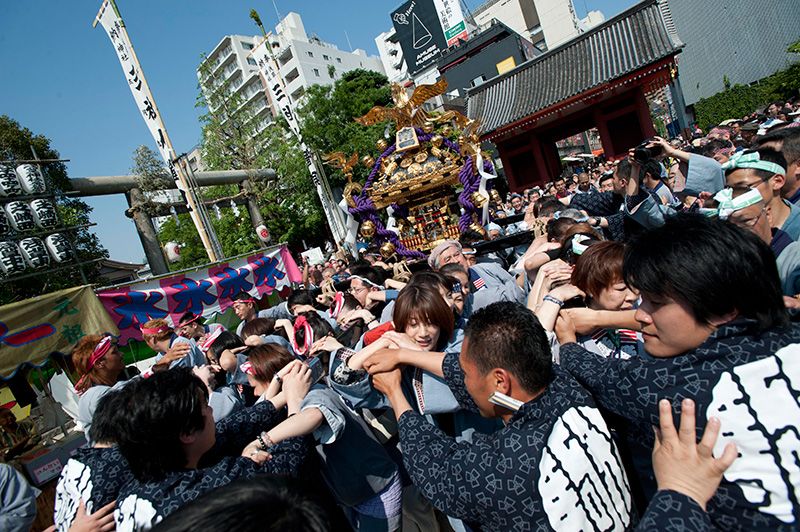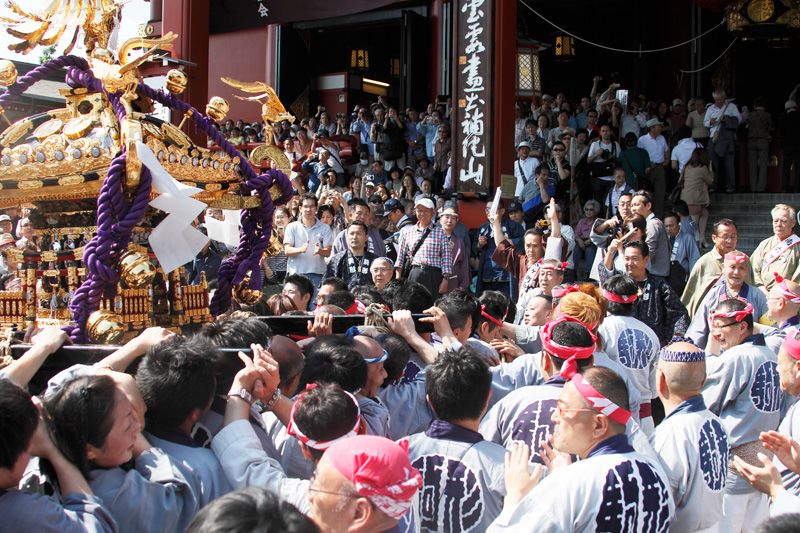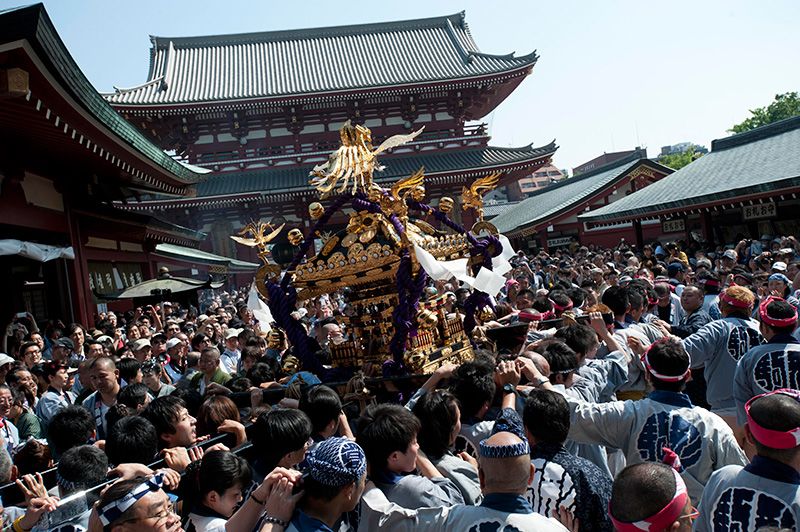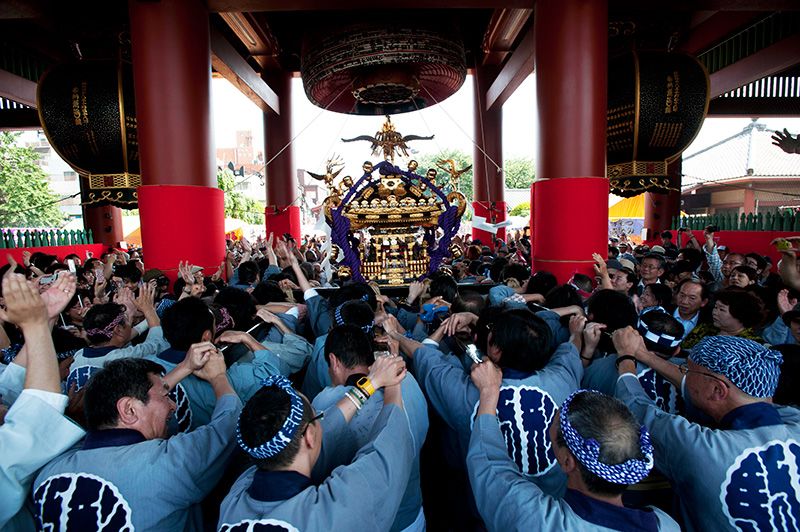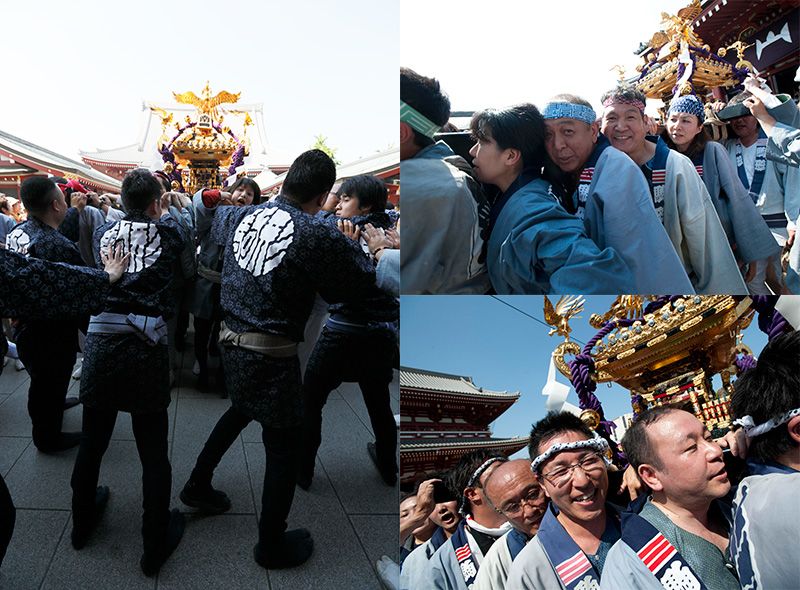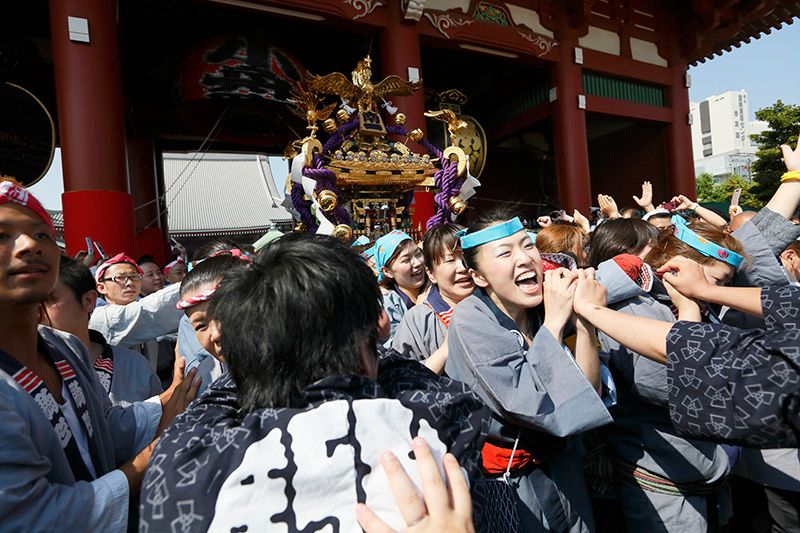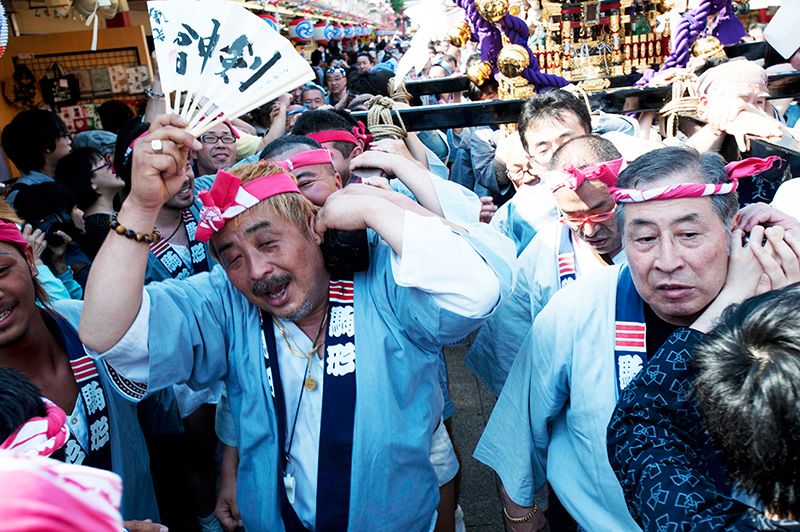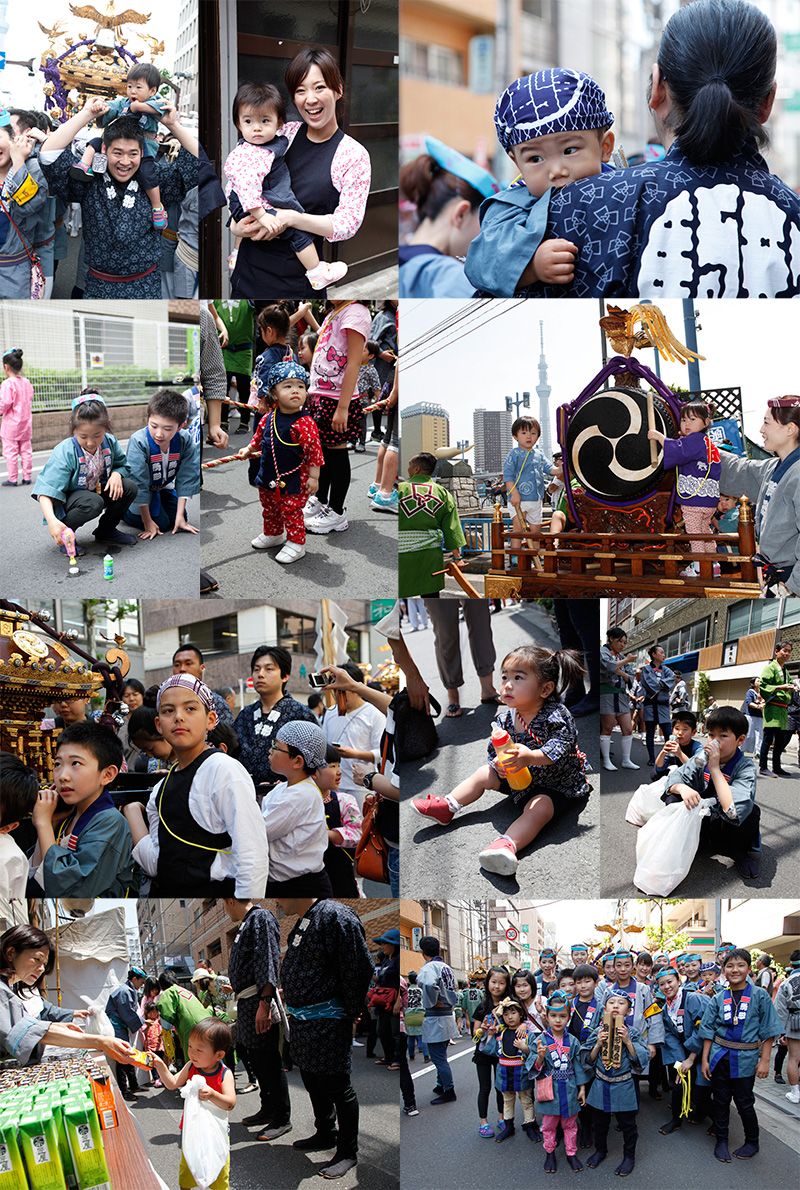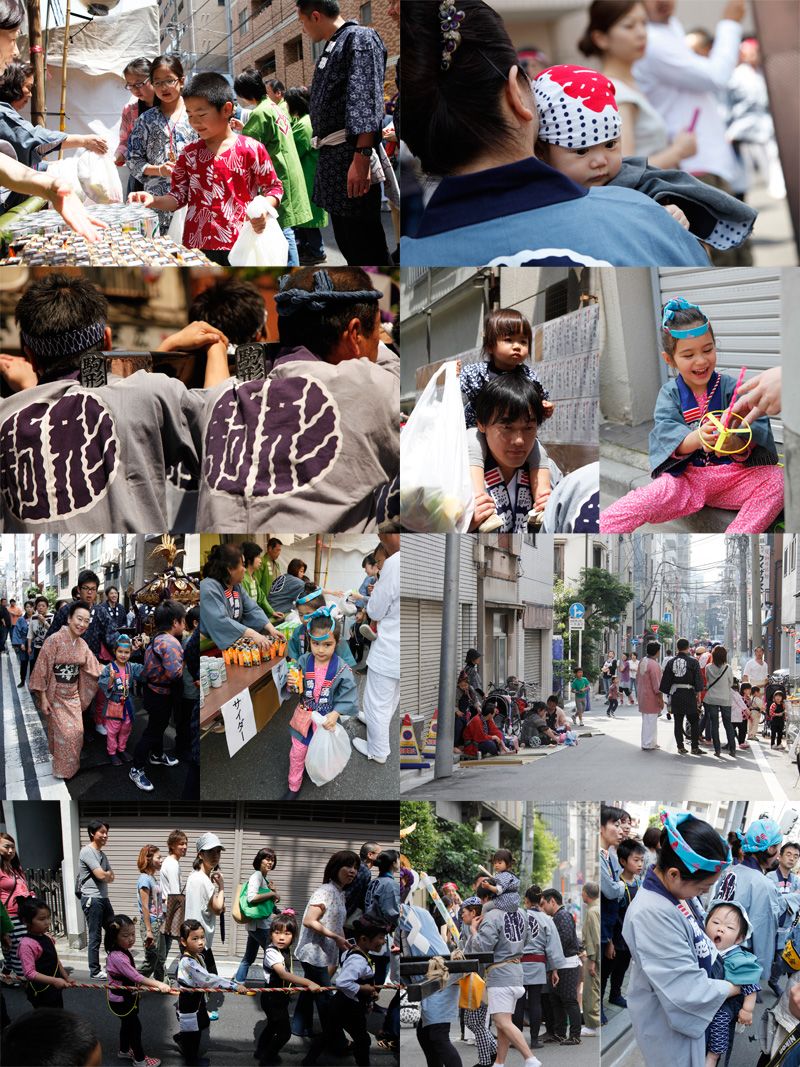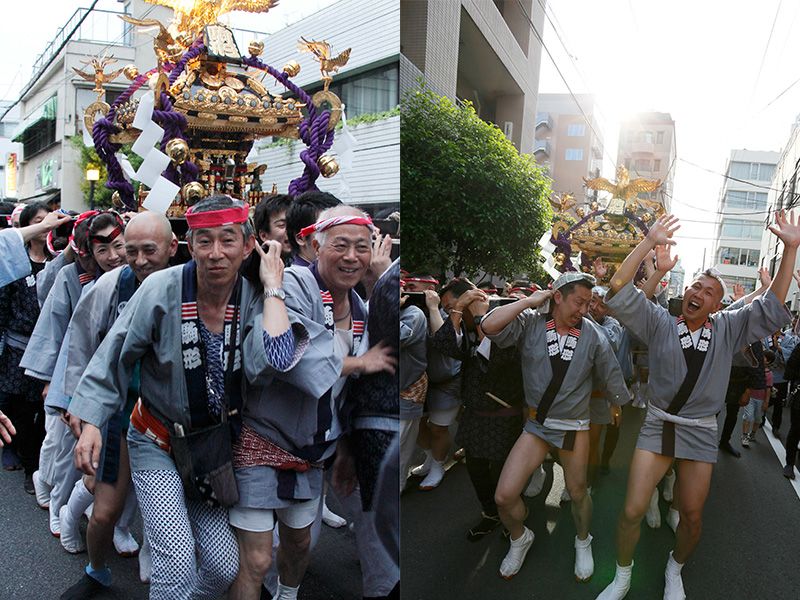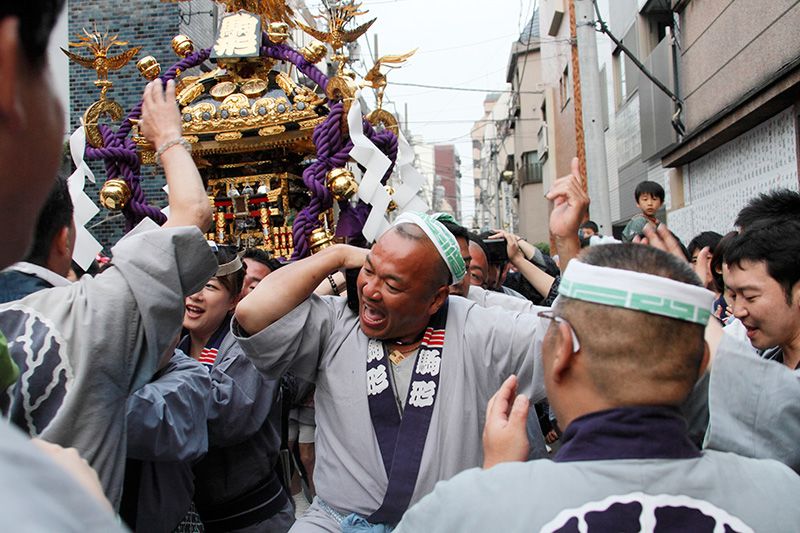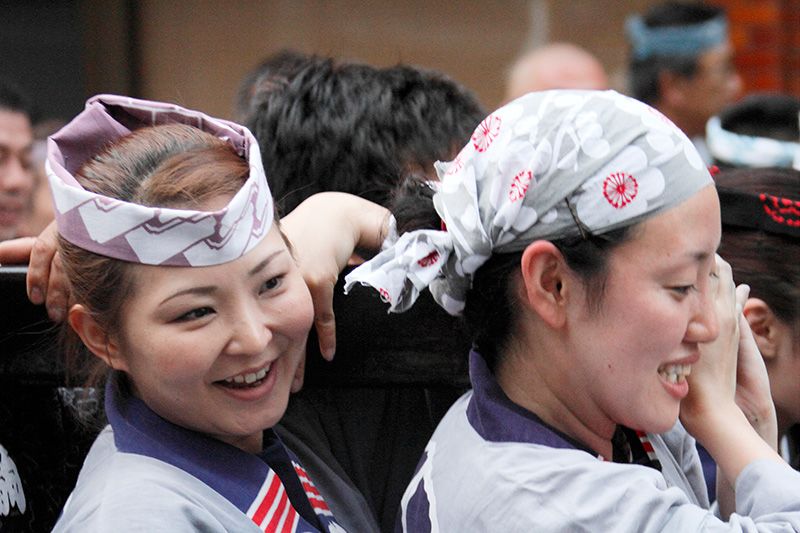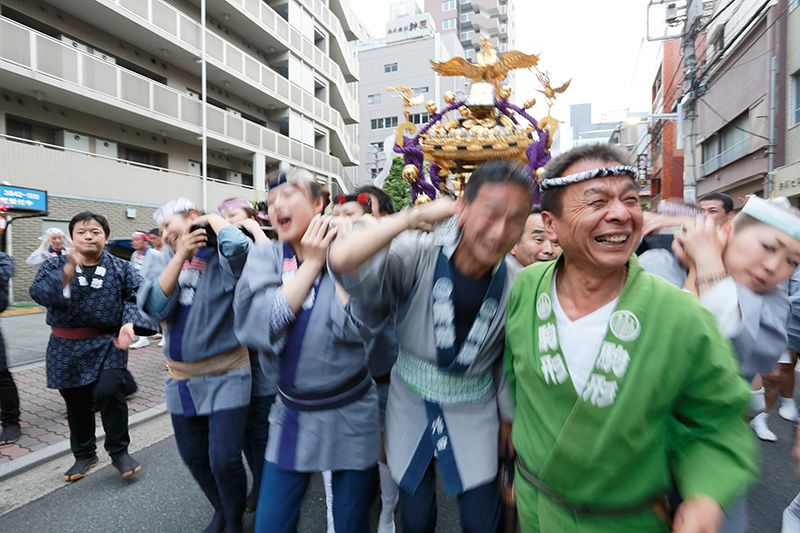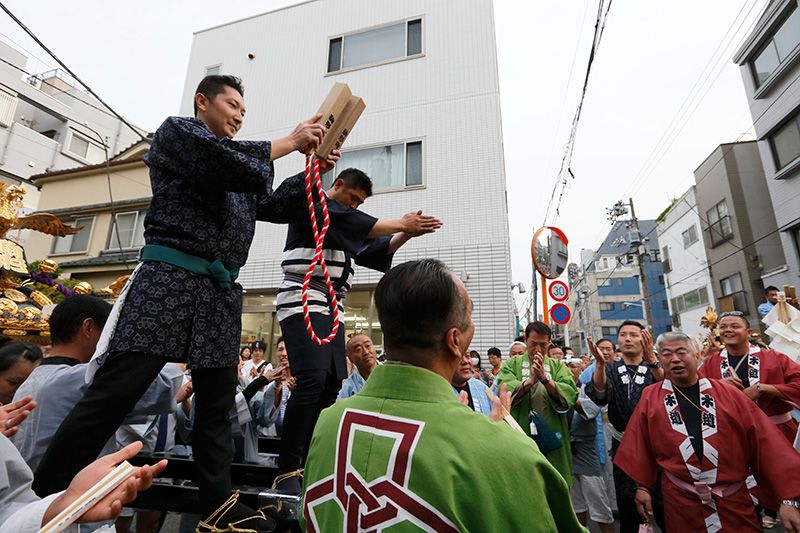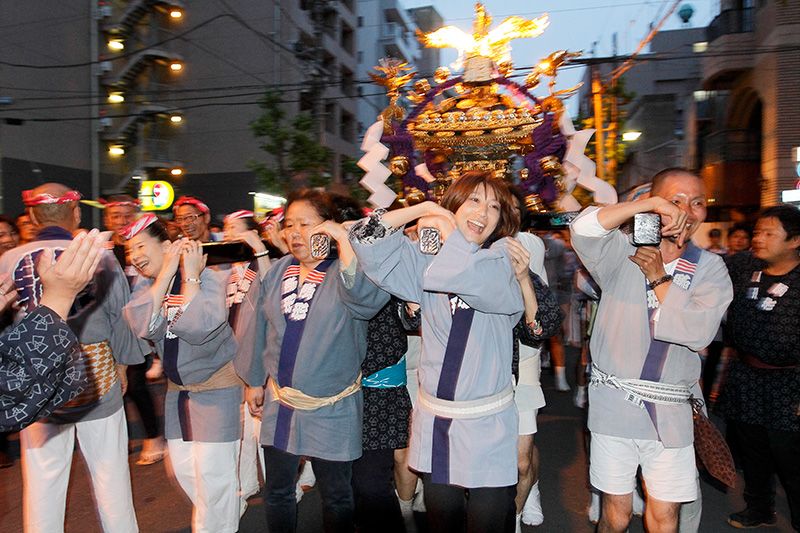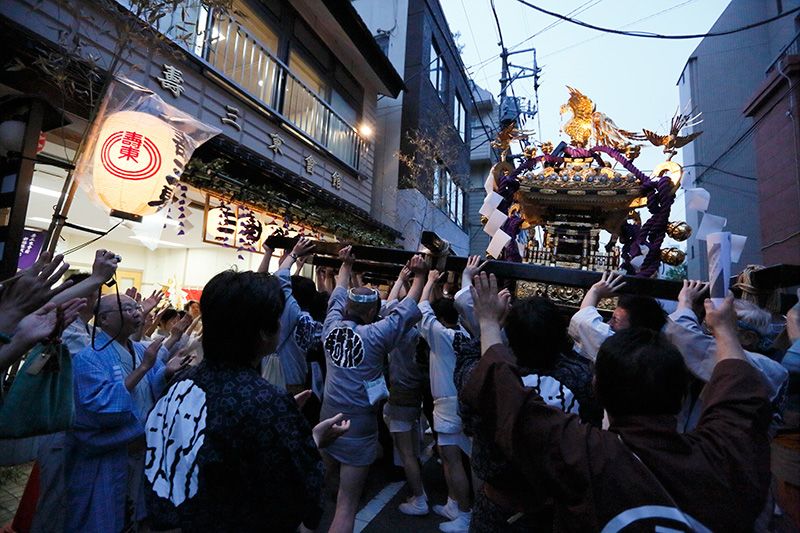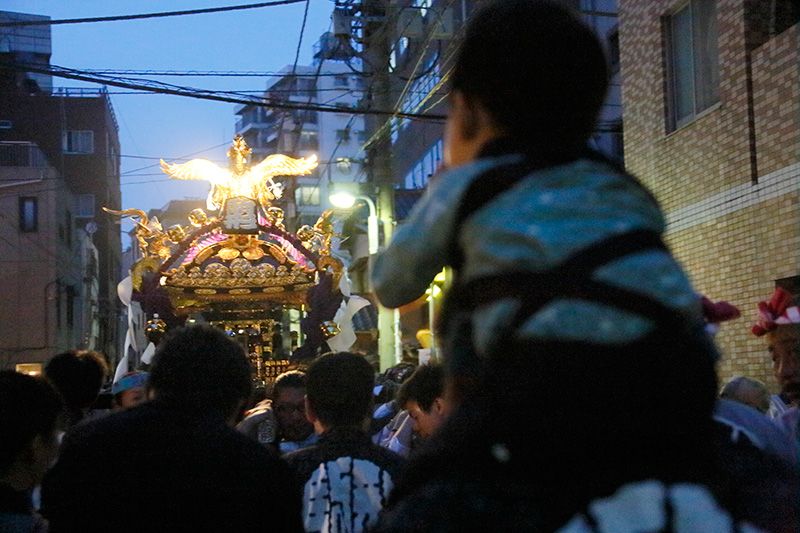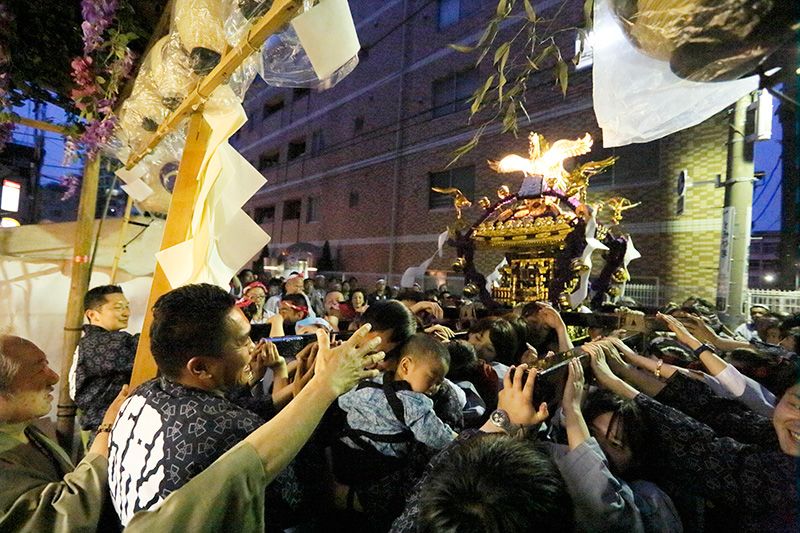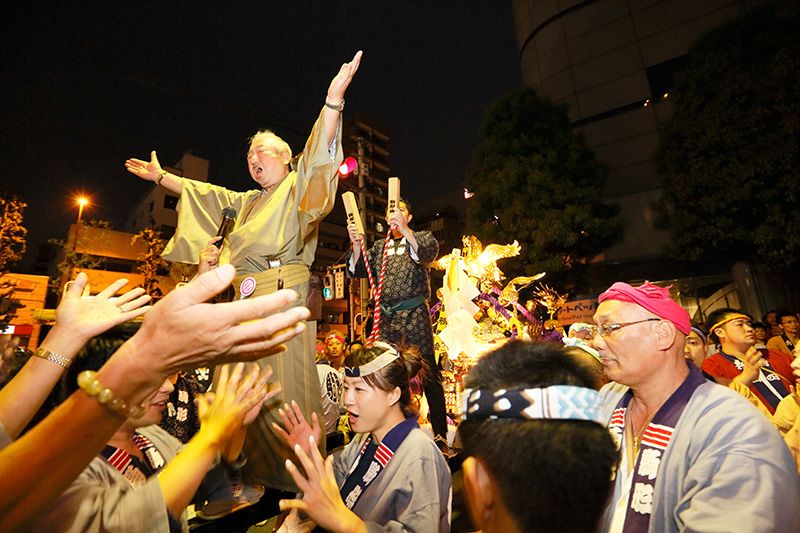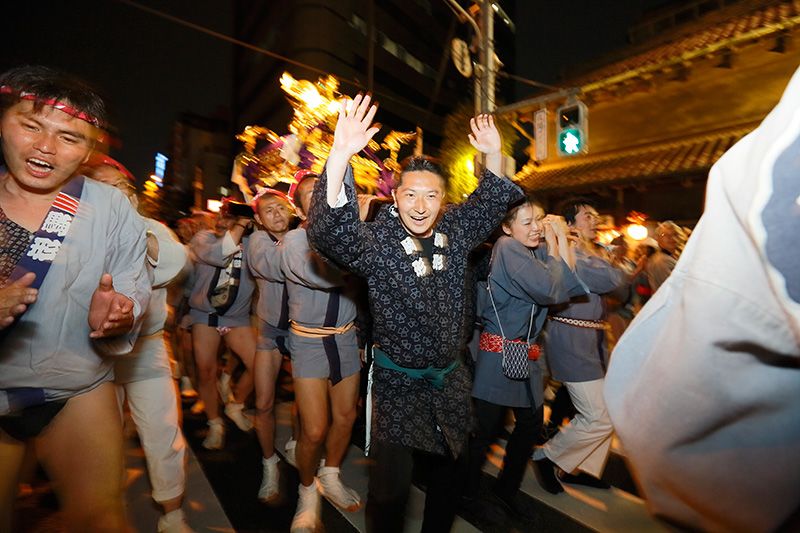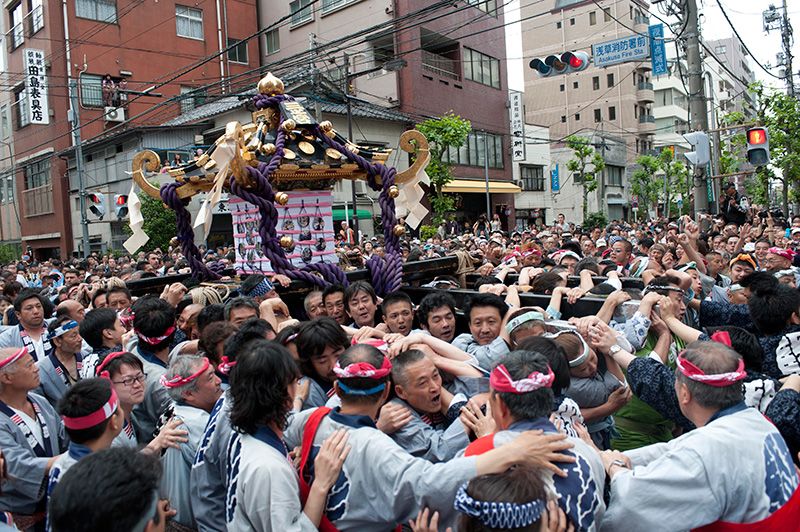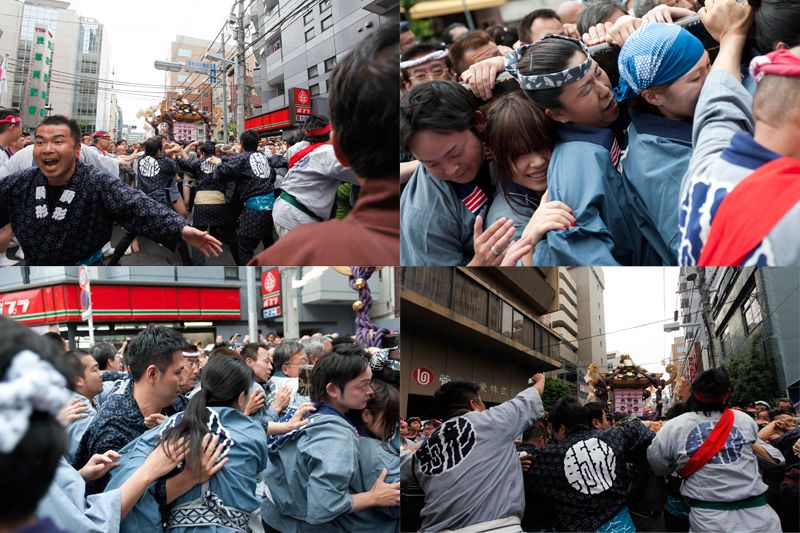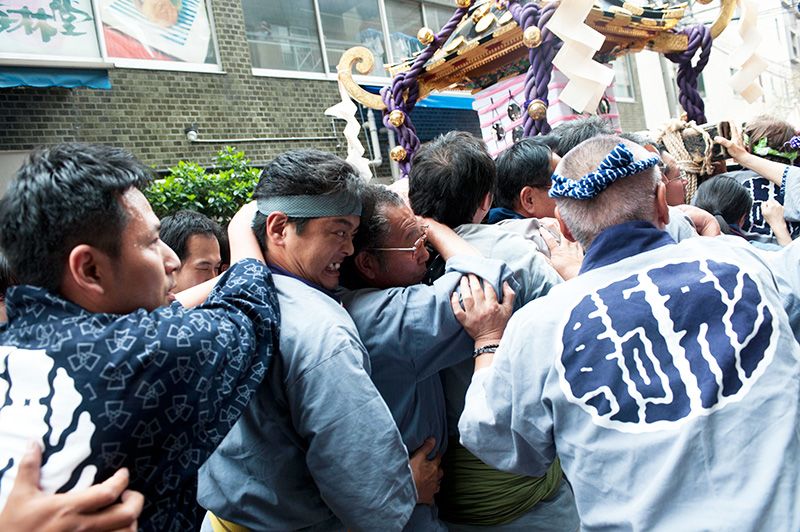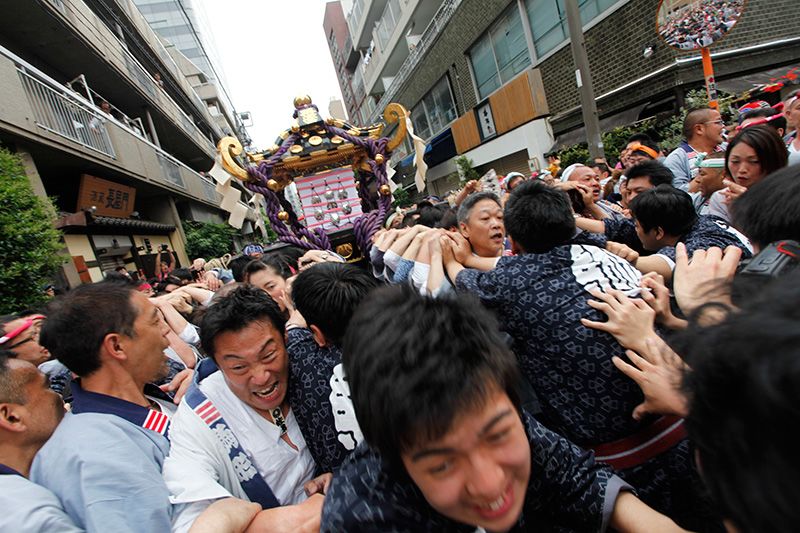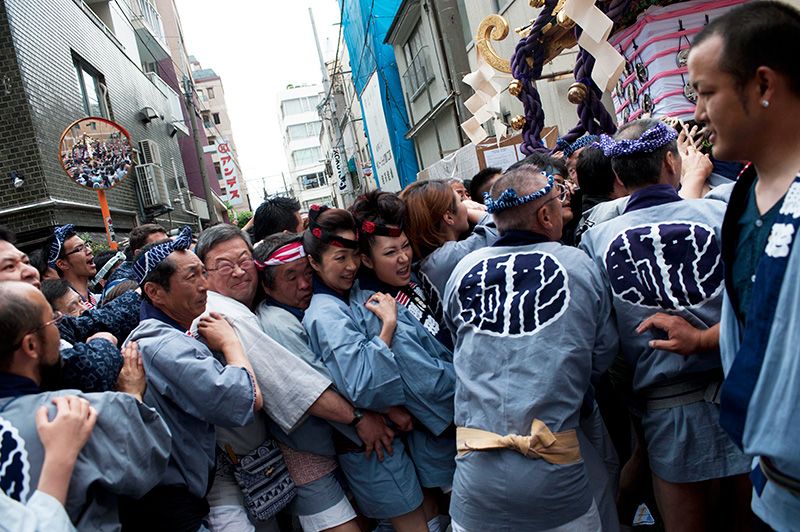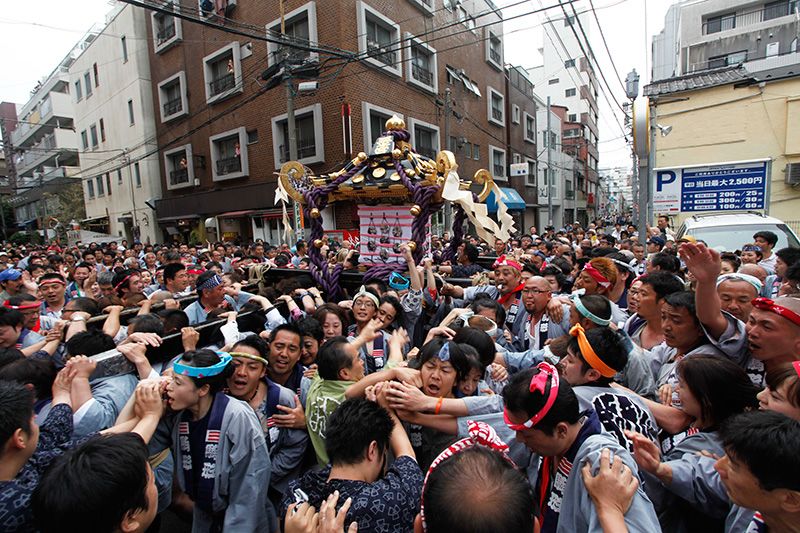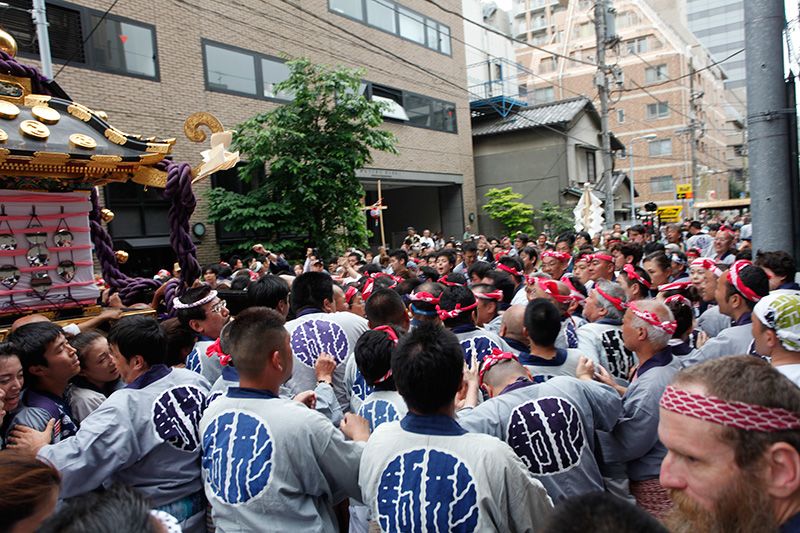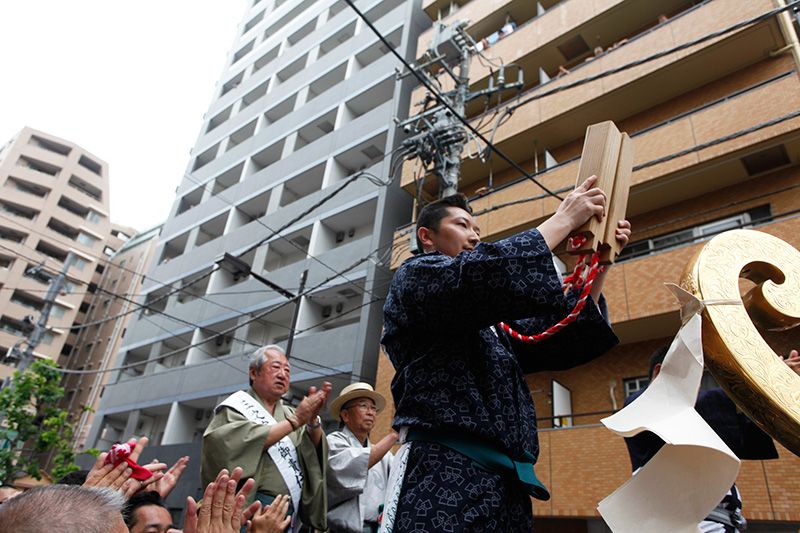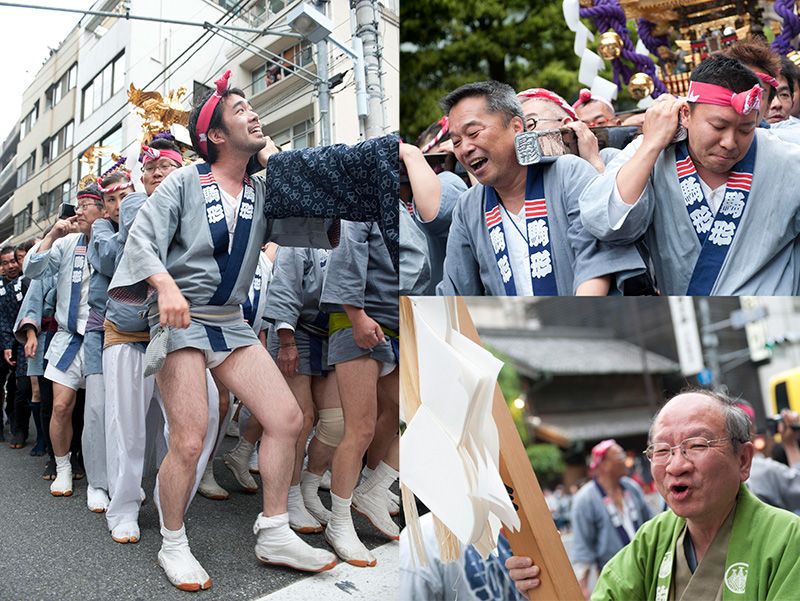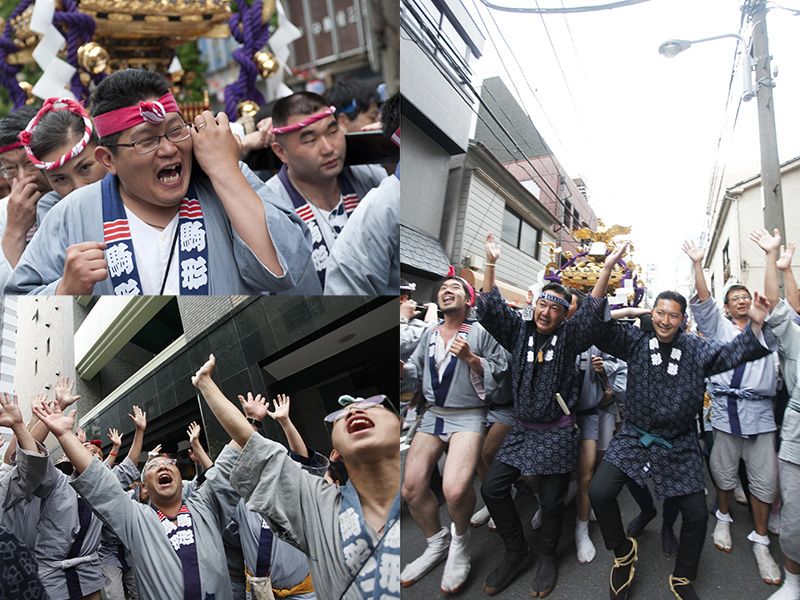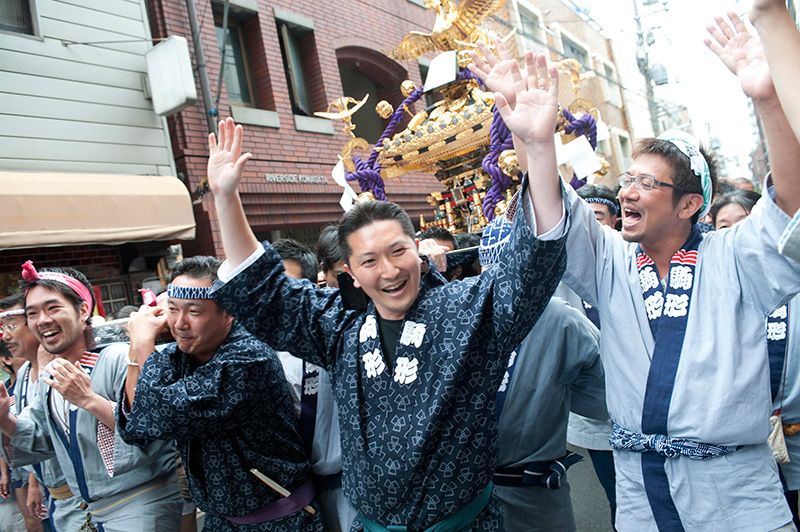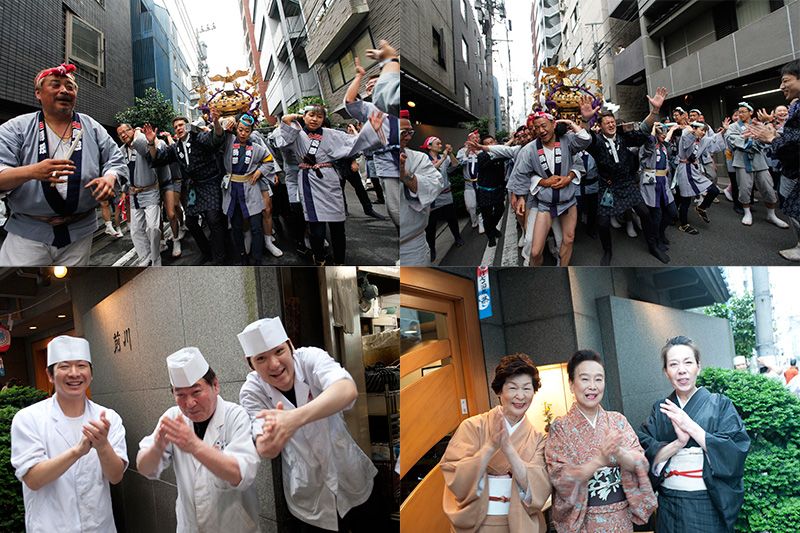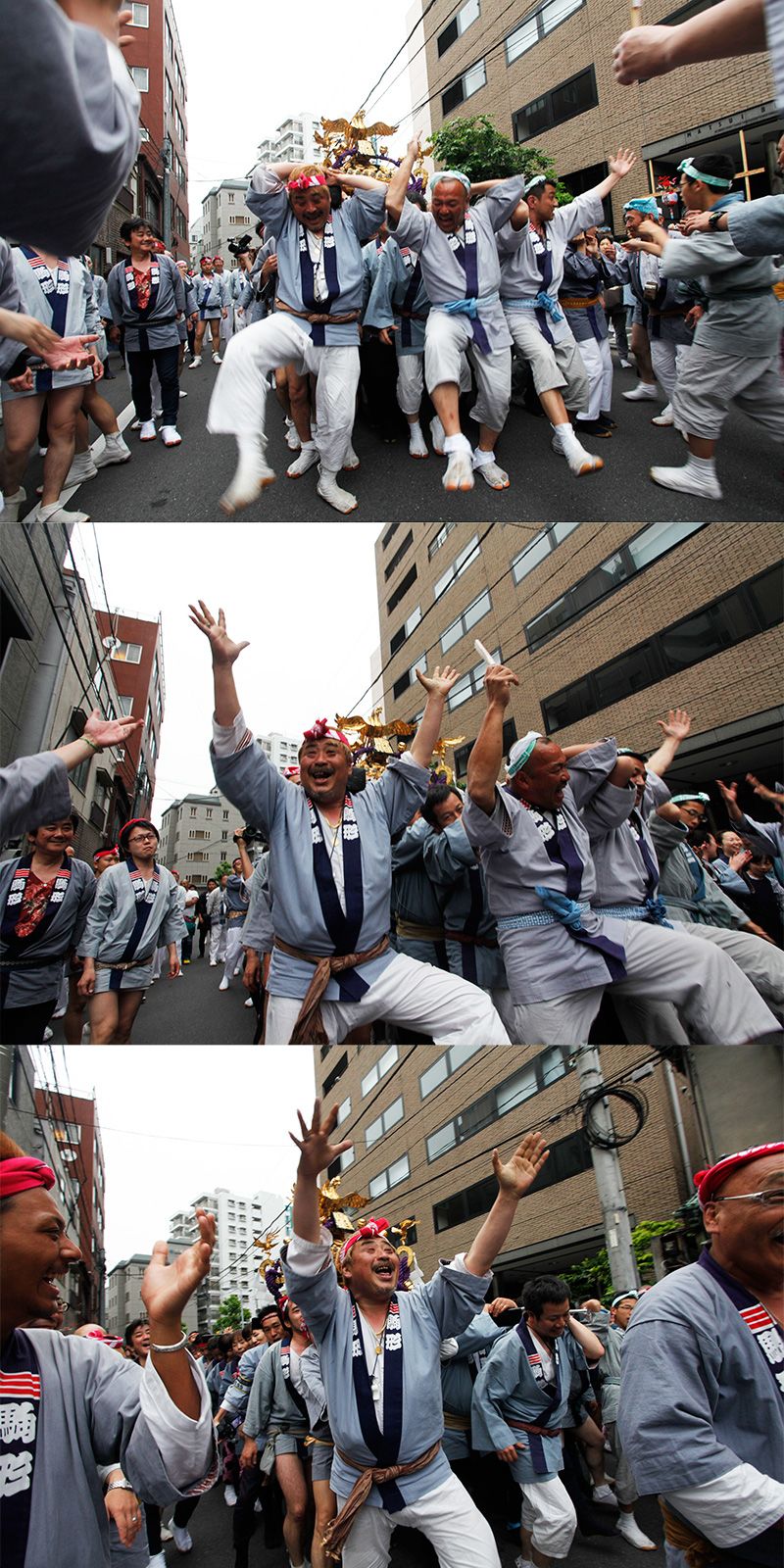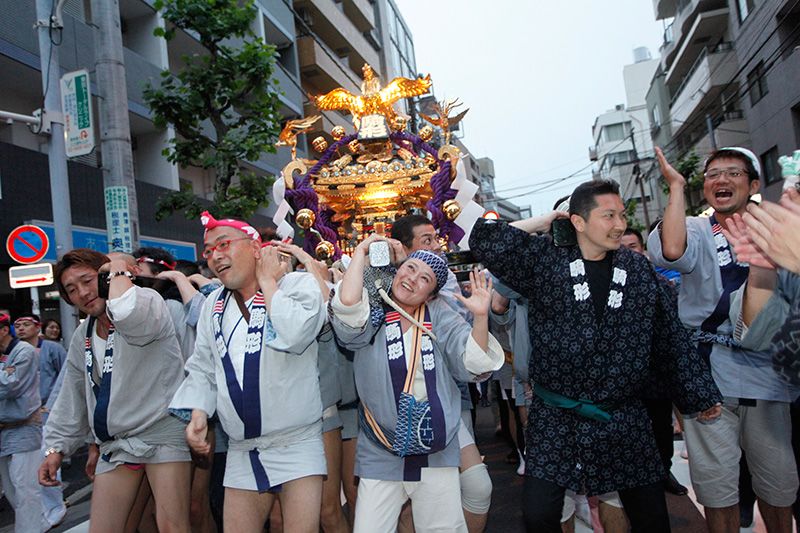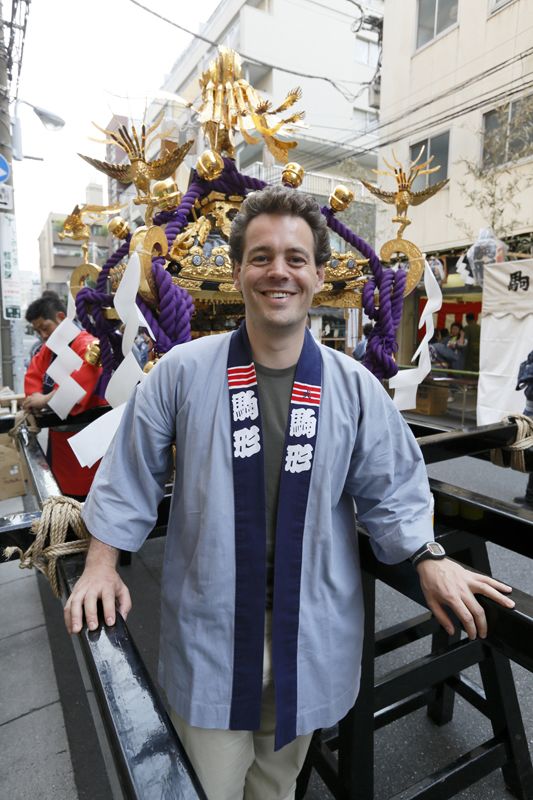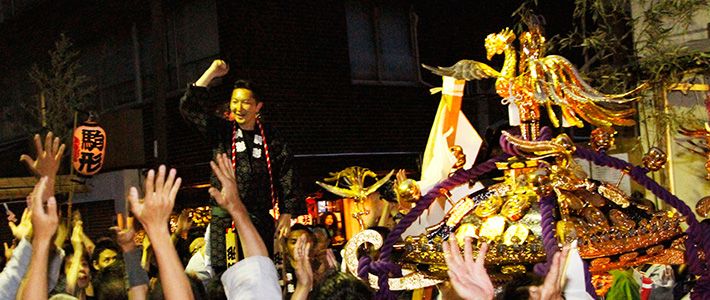
Matsuri Days (1): A Guide to Asakusa and the Sanja Matsuri
Experiencing the Sanja Matsuri
Guideto Japan
Culture- English
- 日本語
- 简体字
- 繁體字
- Français
- Español
- العربية
- Русский
The main action of the Sanja Matsuri takes place over two days during the third weekend in May: May 19–20 in 2012. On the Saturday, the mikoshi from 44 neighborhoods in the Asakusa area are carried through the streets to the Asakusa Shrine. Here they pay their respects, receive a blessing, and are spiritually recharged for the next twelve months. On the Sunday, the three chief deities of Asakusa Shrine return the favor, as their juggernaut mikoshi are paraded on a divine tour of inspection around the streets of Asakusa, bringing mayhem and noise wherever they go.
Komagata is one of the 44 neighborhoods that take part in the festival every year. The neighborhood lies about a 15-minute walk south along the Sumida River from Sensōji—though this walk takes considerably longer in the dense crowds that throng the area throughout the festival weekend. The neighborhood’s best-known landmark is Komagata Dojō, a family-owned loach restaurant where little has changed in two centuries.
At around 9:30 on Saturday morning, a crowd of around 200 people has gathered in a back street just a minute’s walk from Komagata Dojō. The low drone of drums and flutes is already underway. The mikoshi stands resplendent in the street, its golden phoenix freshly polished for the big day. Groups of men sit on the sidewalk drinking beer.
“I’ve been involved with the festival since I was a child. It’s a part of who I am now,” says Onda Osamu, the locally born lantern-maker who is in charge of supervising the Komagata festivities this year.
 Onda Osamu is the sixth-generation head of Ōshimaya Onda, a local company that makes traditional paper lanterns. May is the busiest time of the year for the company, as orders flood in for new lanterns for the festival.
Onda Osamu is the sixth-generation head of Ōshimaya Onda, a local company that makes traditional paper lanterns. May is the busiest time of the year for the company, as orders flood in for new lanterns for the festival.
 Onda with his wife Satomi and their children, pictured with the Komagata “mikoshi” on the morning of May 19.
Onda with his wife Satomi and their children, pictured with the Komagata “mikoshi” on the morning of May 19.
The cancellation of the festival in 2011, in the aftermath of the Tōhoku earthquake, was a keenly felt blow and people are clearly determined to party extra-hard this year to make up for it. As well as the regular mikoshi, a smaller version for children is back in operation this year for the first time in ten years. “Once a tradition is interrupted, it’s really difficult to revive it,” Onda says. “That’s another reason why it’s so important to treasure the traditions of the festival and ensure that we pass them onto the next generation.”
Mikoshi on Parade
There is a hush in the air as people get ready to leave. After a short pep talk and a ceremonial round of rhythmical handclapping led by Onda, the mikoshi is lifted into the air and starts off uncertainly on its long, wobbling march to Asakusa Shrine. Around sixty volunteers support the mikoshi, their syncopated chants and cries punctuated by the snake-charmer music of flutes and drums.
With shifting, lumbering gait, the shrine lurches off in the direction of Asakusa Shrine, making regular stops at traffic lights as the Saturday-morning traffic streams past. The bearers indulge in dance steps as they walk, swinging from side to side like the world’s most heavily encumbered can-can line. Policemen add to the din with their whistles, shouting out a warning whenever the mikoshi threatens to stray too close to the oncoming traffic.
At the crossroads, mikoshi from different neighborhoods converge. The music of different bands blends into one loud throb of sound. Each neighborhood team wears different colored hanten coats, each emblazoned with the name of the neighborhood written in stylized kanji, the different “team colors” lending the streets the air of a festive football tournament or athletics meet.
The Tokyo Skytree bounces in and out of view as the crowd pushes its way slowly up the narrow Orange Road shopping street. It is 10:30 now, and temperatures are rising. A woman pushes her baby in a stroller, joining in with the chants as she walks. An old man eating an ice cream is one of a crowd of shoppers who have lined the streets to watch.
 At several points, the procession’s route takes it across one of the area’s main roads, which remain open to traffic throughout the festival.
At several points, the procession’s route takes it across one of the area’s main roads, which remain open to traffic throughout the festival.
 Carrying the “mikoshi” down the Orange Road shopping street.
Carrying the “mikoshi” down the Orange Road shopping street.
 A mother looks on as her children help to carry the children’s “mikoshi.”
A mother looks on as her children help to carry the children’s “mikoshi.”
Kids are lofted onto fathers’ shoulders above the sea of heads. By now, there is an endless line of wobbling mikoshi lurching through the streets as far as the eye can see.
At the end of the Orange Road shopping street, everyone pauses for a break before moving on to the main event. The temple Sensōji and its narrow, crowded streets are just a short walk away now. Onda gets up on top of the mikoshi and gives a few words of encouragement to the children, who are clutching bottles of green tea that look like bowling pins in their small hands.
The parade enters the Nakamise, a narrow alley of souvenir stall that leads to the Sensōji. The Nakamise is congested at the best of times. Today, with mikoshi honing in on the temple from all directions, the throng is so thick that people are flung up against the fences. Blindly, people raise their phones over their heads with one hand, like periscopes. The smells of hair oil and perfume and sweat mingle with the aromas of fried noodles and cotton candy drifting through the air from the temple stalls.
 The “mikoshi” makes its way down the crowded Nakamise.
The “mikoshi” makes its way down the crowded Nakamise.
 Visitors and locals mingle in one of the many small restaurants that line the streets around Sensōji.
Visitors and locals mingle in one of the many small restaurants that line the streets around Sensōji.
The procession makes its way to the back of the temple, where a large gravel square has been turned into a giant mikoshi parking lot. I stand in the shade of an old tree and watch as the stream of mikoshi reels its way into the holding space and the gods in their chariots are carefully parked. Half a dozen of them or more are visible at a time, dancing their way up through the narrow alleyways. By the time the last of them arrives, 100 mikoshi and their teams of colorfully clad bearers are crammed into the space behind the temple, bookended by the twin peaks of the Sensōji pagoda and the newly built Tokyo Skytree.
The portable shrines glint in the sun as they wobble on the shoulders of their bearers. From a distance, the mikoshi seem to come alive. Through the clouds of dust kicked up into the early afternoon sun, they seem to be not so much carried as escorted by the crowd of bearers, like the Easter Island statues that legend says walked their own way across the island to their coastal resting places. The atmosphere is reminiscent of a tailgate party in the buildup to a big game.
 The “mikoshi” gather behind Sensōji.
The “mikoshi” gather behind Sensōji.
Each neighborhood is called in turn to enter Asakusa Shrine for a ritual blessing. From my perch in the shade, I watch them bounce past, each mikoshi arriving in a blur of phoenixes, yin-yang symbols, and fishermen’s nets. Three elderly man in straw hats issue instructions from a raised platform, announcing the mikoshi to huge cheers as they enter the shrine precincts, like competing troupes at a dance meet. In front of the temple, a cheer goes up as the bearers lift the mikoshi high into the air to pay respects to the Kannon Bodhisattva.
 A “mikoshi” glints in the afternoon sunlight.
A “mikoshi” glints in the afternoon sunlight.
 Onda leads a round of ceremonial clapping as the bearers lift the “mikoshi” to carry it back home.
Onda leads a round of ceremonial clapping as the bearers lift the “mikoshi” to carry it back home.
 In front of the main prayer hall at Sensōji.
In front of the main prayer hall at Sensōji.
 The Nakamise is more crowded than ever during the festival.
The Nakamise is more crowded than ever during the festival.
 Passing through the famous Kaminarimon.
Passing through the famous Kaminarimon.
 In the background, the new Tokyo Skytree.
In the background, the new Tokyo Skytree.
The Komagata mikoshi arrives back home around four in the afternoon. Children run in the streets with the toy guns and balls they have won at the temple stalls. Several of the grownups stretch out on the street to sleep.
 The “mikoshi” starts off on its circuit of the Komagata neighborhood.
The “mikoshi” starts off on its circuit of the Komagata neighborhood.
 The “mikoshi” finishes its tour of the neighborhood as evening falls, bringing Saturday’s festivities to a close.
The “mikoshi” finishes its tour of the neighborhood as evening falls, bringing Saturday’s festivities to a close.
Related Tags
Asakusa Matsuri Sensoji mikoshi festival Nakamise Sanja Matsuri



